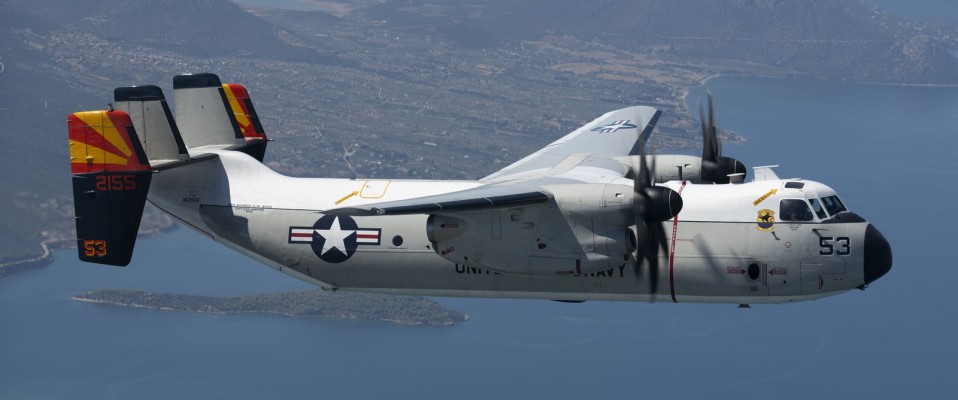The Greyhound’s Sundown
Report and photos by: Patrick Roegies, Paul Gross, Jurgen van Toor, Ben Gorski, Paul van der Linden
January 30, 2024
Introduction
For more almost seven decades, the Carrier Onboard Delivery (COD) has been carried out by the United States Navy workhorse the Grumman C-2A Greyhound, with the first trap on CV-63 USS Kitty Hawk taking place in August 1966. The first operational missions were taking place during the Vietnam War where the C-2A replaced the Grumman C-1A Trader assigned to Fleet Logistic Squadron VR-50
Despite its impressive service record, the capabilities of this reliable aircraft have become largely outdated. The United States Navy started the search for a replacement for the Greyhound. With the introduction of the Boeing MV-22B Osprey within the USMC in the previous decades, the United States Navy (USN) started to investigate the possibilities to replace the C-2A Greyhound with a modified version of the V-22 for COD (Carrier Onboard Delivery).
This resulted in a customized version of the V-22 for the United States Navy, the Boeing CMV-22B Osprey. Currently three squadrons have since been equipped with the CMV-22B and have reached the Safe for Flight status. The C-2A Greyhound will be withdrawn from use in the next few years.
Fleet Logistics Multi-Mission Squadron VRM-30 “Titans” served as the Carrier Onboard Delivery (COD) aircraft during the CVN-70 USS CARL VINSON deployment in 2021-2022 and the CVN-72 USS Abraham Lincoln deployment in 2022.
The Fleet Replacement Squadron (FRS) for the CMV-22B is VRM-50 “Sun Hawks”, is operational operating form Naval Air Station North Island. The third CMV-22B squadron is VRM-40 “Mighty Bisons” and is currently formed at NAS North Island to be transferred to Naval Station Norfolk to eventually replace the C-2A Greyhound squadron Fleet Logistics Support Squadron VRC-40 “Rawhides”
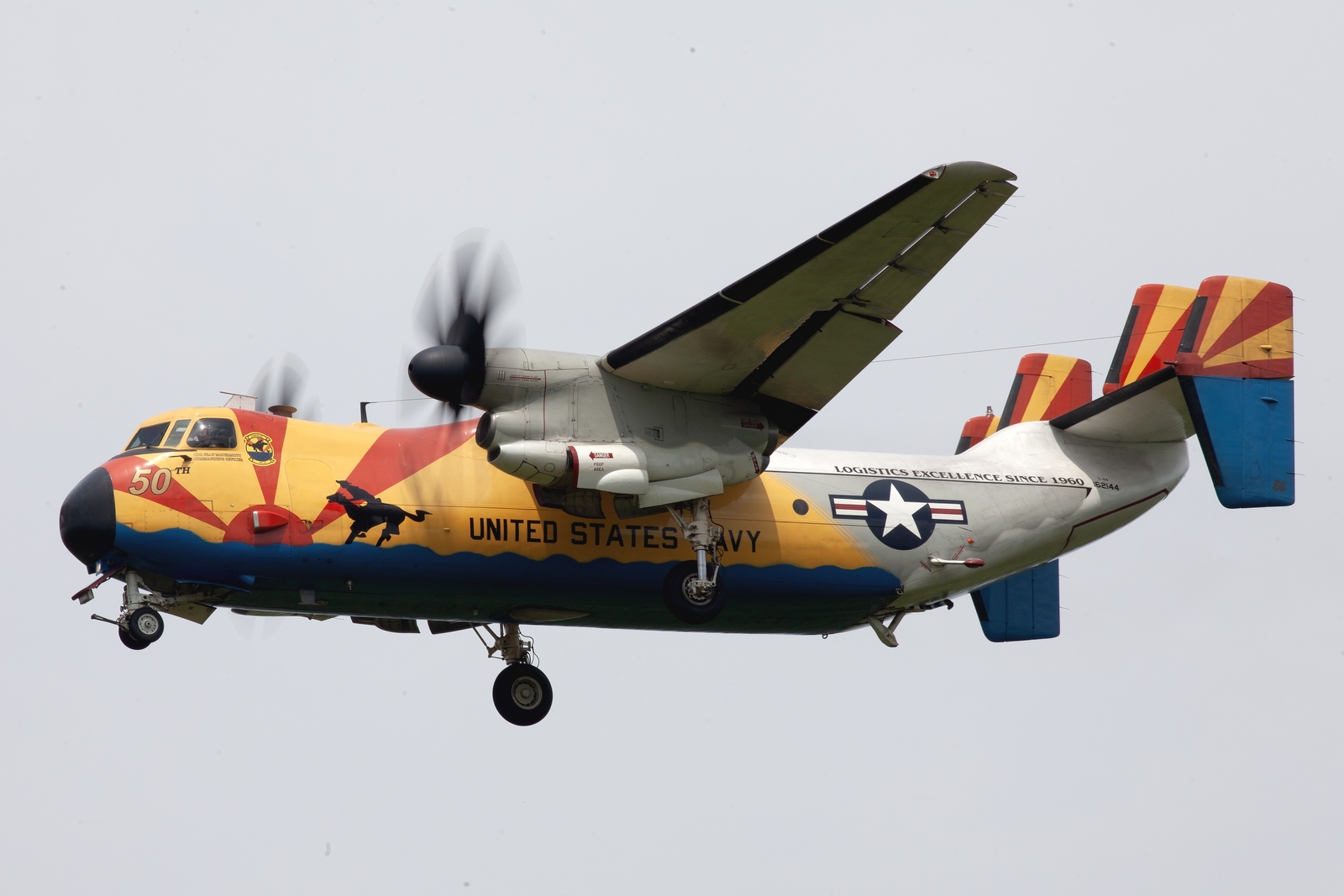
Almost seven decades of reliable service
The C-2A Greyhound had a remarkable service record and provided support to the Carrier Strike Groups during major operations in the past like Operations Desert Shield, Desert Storm, and Operation Enduring Freedom. With the integration of the CMV-22B into the operational squadrons, the C-2A Greyhound is approaching its final sundown.
With the first flight of the prototype of the C-2 Greyhound, taking place in 1964 the production commenced in 1965. The original delivered C-2A aircraft were overhauled, to extend their operational life as early as 1973. Because of the success of the aircraft in 1984, a contract was awarded for thirty-nine new C-2A aircraft to replace the earlier airframes. Dubbed the reproduced C-2A due to the similarity to the original aircraft, the new C-2A includes substantial airframe and avionics systems improvements. All the older C-2As were withdrawn from use in 1987, and the last of the batch of the thirty-nine new delivered aircraft was delivered in 1990.
Between November 1985 and February 1987, the squadron VR-24 “Lifting Eagles”, operating seven of the initial batch production C-2As, demonstrated exceptional operational readiness while delivering two million pounds of cargo, two million pounds of mail and 14,000 passengers in support of the European and Mediterranean Theatre commands. VR-24 “Lifting Eagles” squadron was eventually decommissioned on 31 March 1993 and their C-2A Greyhounds were redistributed over the remaining squadrons.
In addition, VAW-110 “Firebirds” and VAW-120 “Greyhawks” operated a modest number of C-2A Greyhounds during a relatively short period. Although the VAW squadrons are actually Grumman E-2C, equipped squadrons the squadrons initially received a number of C-2A Greyhounds. In May 1980, the 2F110 Operational Flight Trainer (OFT) was delivered and ready for use in early May 1981. The OFT is designed to simulate actual in-flight emergencies and train Replacement Pilots handle such emergencies prior to receiving E-2C training flights.
During the operational lifetime only six aircraft were lost due to accidents, with the last two aircraft over a period of almost thirty years. Both root cause investigations have turned out the accidents were due to a maintenance issue ad not a structural design error. The first accident was solely a pilot error – ran off the runway during a practice touch and go landing. The second accident was a catastrophic failure as a result form a propeller spinner that broke loose during flight. This part has subsequently been modified and changes were made to maintenance and NATOPS procedures to ensure reliability in the future.
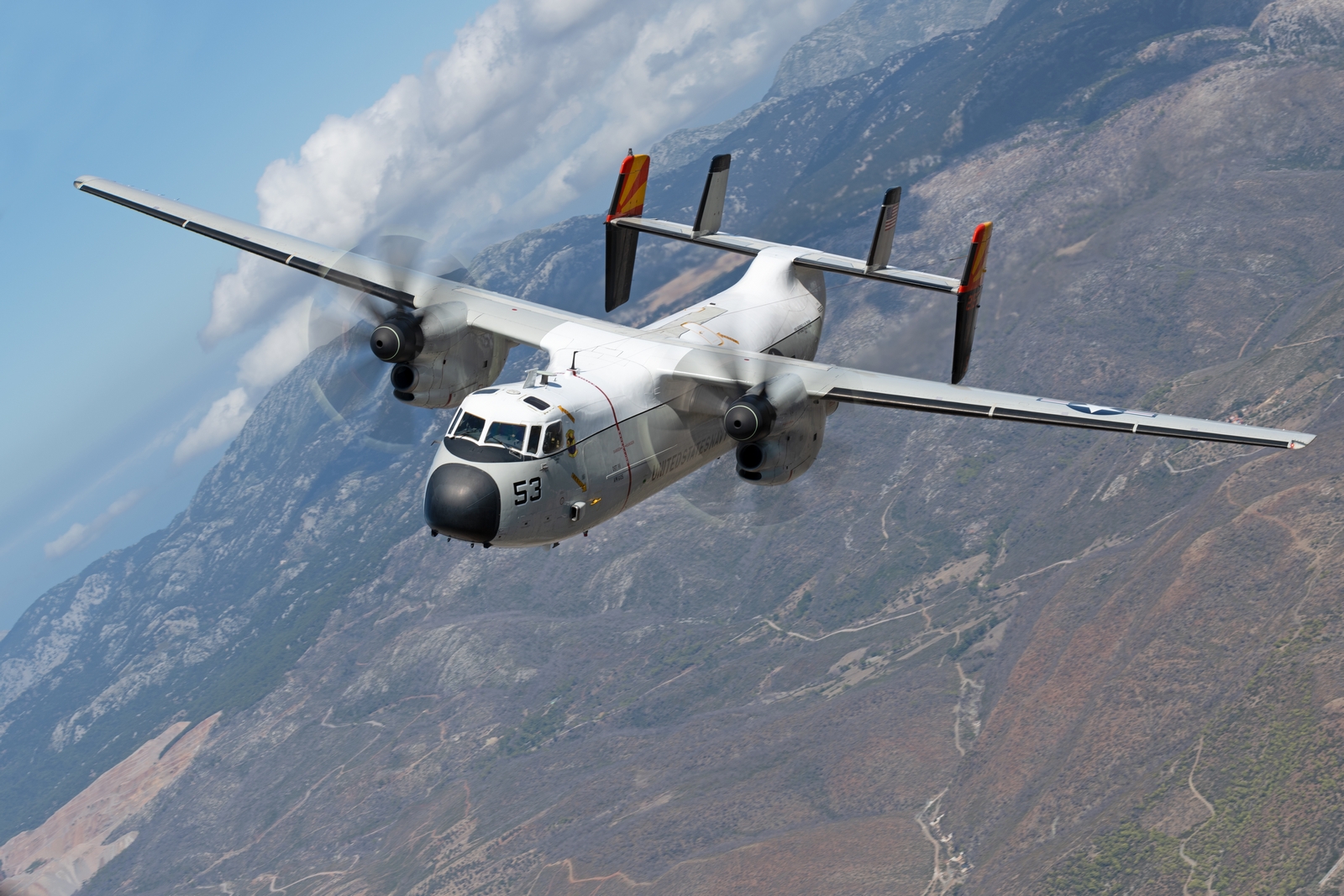
Providing the fleet with logistical support
The C-2A can deliver a payload of up to 10,000 pounds. The cabin can readily accommodate cargo, passengers or both. It is also equipped to accept litter patients in medical evacuation missions. Priority cargo such as jet engines can be transported from shore to ship in a matter of hours. The large aft cargo ramp and door allow straight-in rear cargo loading and unloading for fast turnaround. The open-ramp flight capability of the C-2A allows airdrop of supplies and personnel from a carrier-launched aircraft. This, plus its folding wings and an onboard auxiliary power unit for engine starting and ground power self-sufficiency in remote areas, provides an operational versatility found in no other cargo aircraft.
During a typical six-month peacetime aircraft carrier deployment, a two-aircraft C-2A detachment will accumulate approximately 1,000 flight hours, transport about 5,000 passengers and haul about one million pounds of cargo. C-2A Greyhounds with upgraded communications, navigation, and instrumentation packages has provided cost-effective, carrier onboard delivery well into this century. The fleet of US Navy C-2A Greyhounds are currently outfitted with the same NP2000 eight-blade propellers that are also used on the E-2 Hawkeye fleet.
CDR James Light, the last Commanding Officer of VRC-30 providers commented; “there is something about the ruggedness of the original Grumman design that resulted in aircraft remaining in operational service for over half a century. During the operational life time the aircraft has proven to be very reliable in a very challenging and rough environment”.
Assigned to the Pacific Fleet VRC-30 “Providers” based at NAS North Island and VRC-40 “Rawhides” based at NS Norfolk assigned to the Atlantic Fleet are the sole remaining Fleet Logistics Support squadrons operating the C-2A Greyhound. With the introduction of the MV-22B within the USMC in the previous decades, the USN commenced to investigate the possibilities for the MV-22 to be integrated within the USN. The increased cargo bay and the enhanced capabilities of the aircraft would enable the COD to transport increased loads. Additionally, the tilt-rotor capability allowed for more austere landing locations both ashore and at sea. With the introduction of the fifth generation, Lockheed Martin F-35C Lightning II the requirement to transport priority cargo such as jet engines cannot be fulfilled by the C-2A Greyhound, as the cargo bay is too small to carry this engine and was one of the main reasons to start the search for a replacement of the trusted COD workhorse.
Because of the enhanced capabilities of the CMV-22B aircraft the squadron designation has been renamed to Fleet Logistics Multi-Mission Squadron (VMM) instead of Fleet Logistics Support Squadrons Composite (VRC).
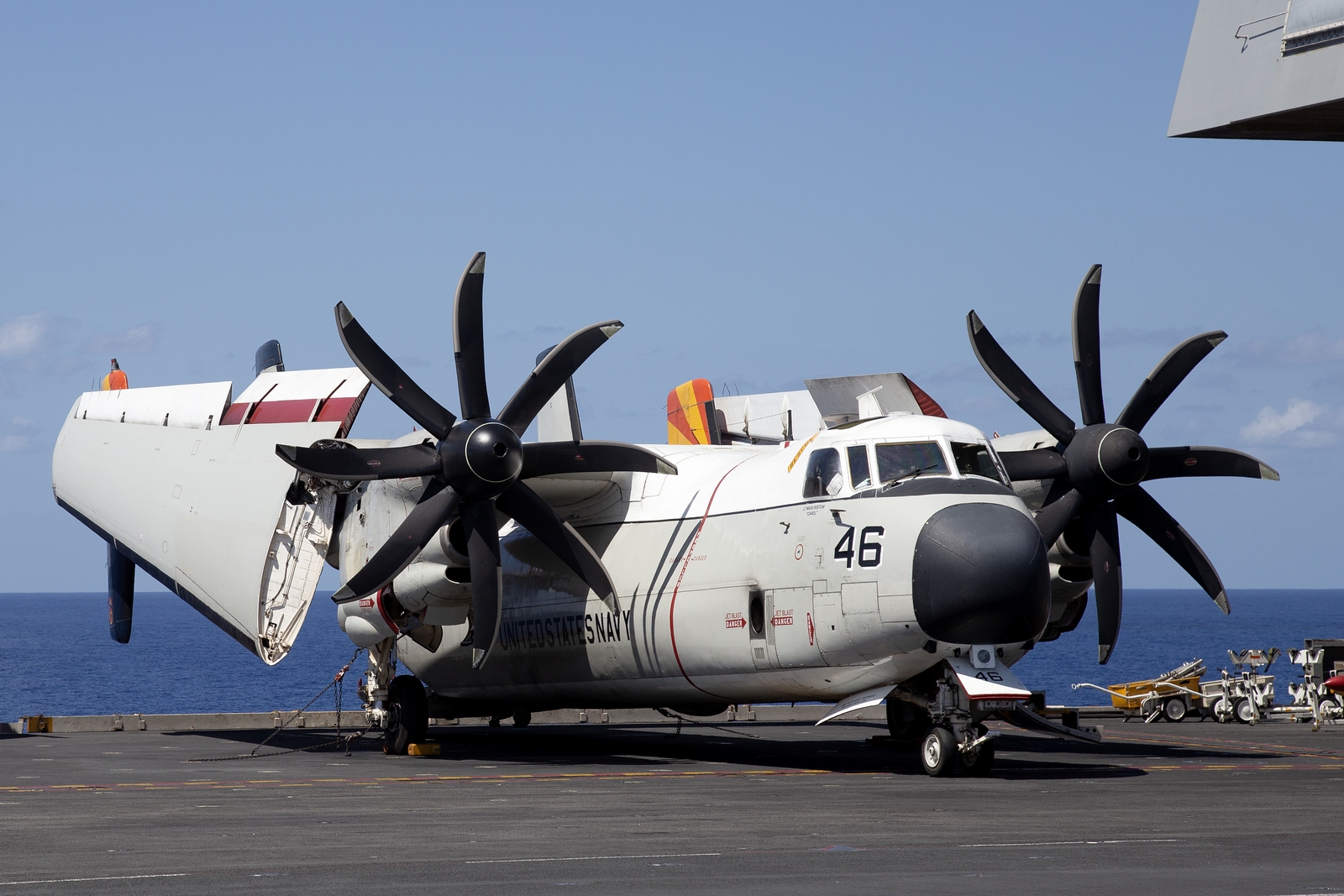
Providers Sundown
Fleet Tactical Support Squadron 30 (VR-30) was commissioned in 1966, redesignated to Fleet Logistics Support Squadron (VRC) 30 in 1978, and the squadron began flying the C-2A “Greyhounds” in 1981.
The first reprocured C-2A Greyhounds have already been transferred to the 309th Aircraft Maintenance and Regeneration Group (AMARG), often called “The Boneyard” at Davis-Monthan Air Force Base for long-term storage. With the upcoming withdrawal from use VRC-30 “Providers” was facing the challenge of keeping all logistic chains up and running. CDR James Light explains; “With the first aircraft already withdrawn from use the capacity within the squadron has been reduced. Both operational VRC-squadrons face the challenge to keep the logistic chain going with detachments scattered over four different continents. It remains a challenge to ensure the efficiency and effectiveness, but with a reliable aircraft and an excellent maintenance team a realistic challenge to maintain. VRC -30 performed their operational tasking until September 2023, maintaining a high level of efficiency and professionalism.
VRC-30 “Providers” performed their last operational flight using the C-2A Greyhound on 20 September 2023 when they transferred Password 36, BUNO 162178, to VRC-40 in Norfolk, Virginia for continued service until 2024. The final crew was commanded by CO James “MOUF” Light, co-pilots XO Jesse “DRAMA” King, OPSO LCDR Joseph “FACEPUNCH” Swindel, with Aircrew AWF1 Jesse Cary, and AWF2 Hunter Kueter. They departed North Island in the morning with a memorable fly-by up taxiway ALPHA by Facepunch, and transited across the country with three Extended Range Fuel Tanks, requiring only one stop in Millington, TN (KNQA) for gas.
Airborne Command & Control and Logistics Wing (ACCLOGWING) leadership with Pilots & Sailors assigned to VRC-40 welcomed the crew after their nine and half hour flight from NAS North Island. VRC-30 will officially dis-establish in December 2023. VRC-30 began flying the C-2A Greyhound aircraft in 1981 and continued to use the aircraft for carrier onboard delivery (COD) to transport passengers, equipment, gear and supplies around the fleet for 42 years.
Capt. Scott A. Wastak, Commander, ACCLOGWING, was present to meet the crew when they arrived. He congratulated the crew for their long-standing dedication to the Greyhound mission.
“A truly historic event for our community and the Navy. The end of an era that is now part of Naval Aviation legacy. Logistics are a critical enabler to warfighting readiness and VRC-30 was instrumental to delivering readiness to the fleet for 45 years.”
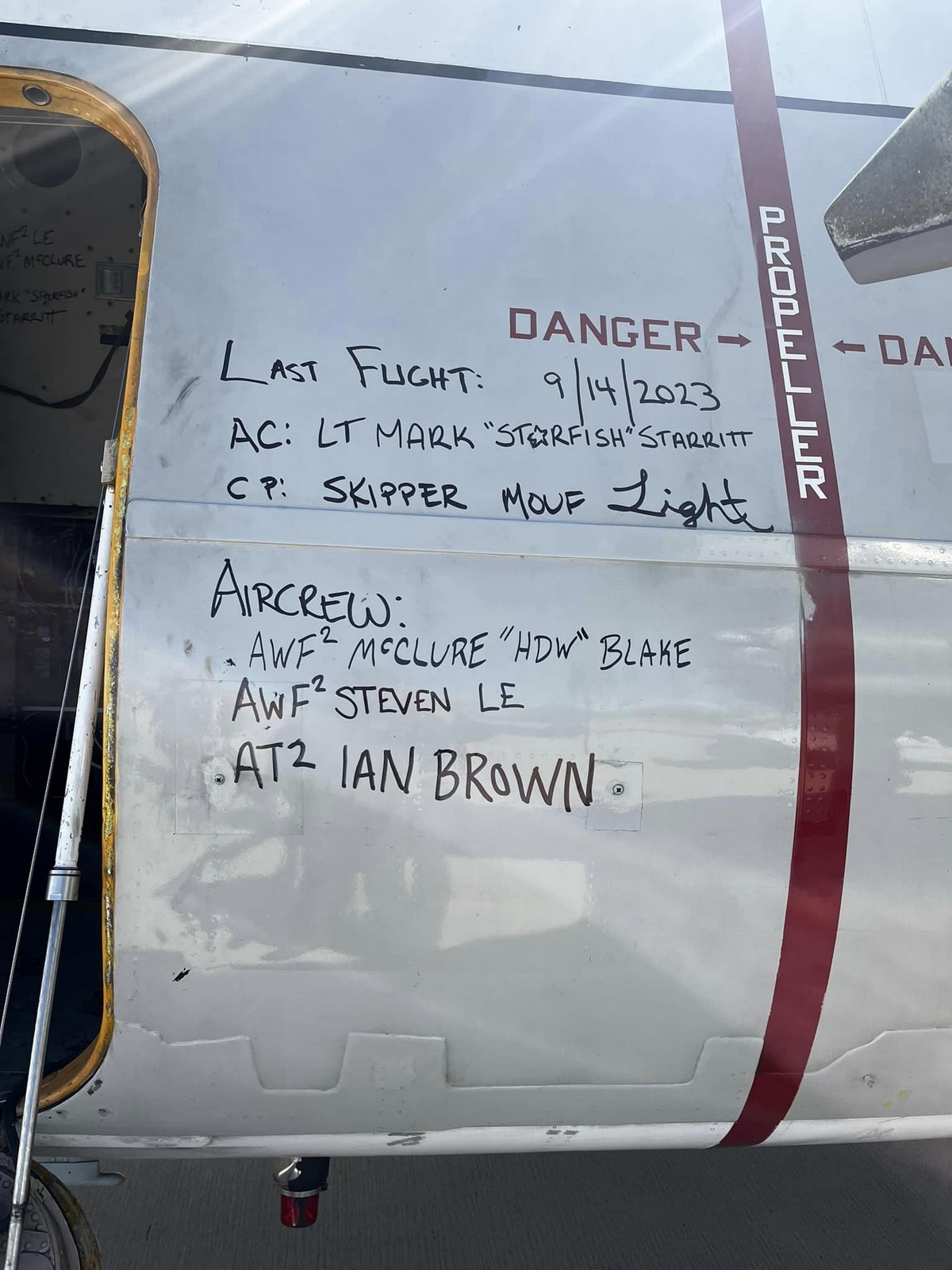
The last of the Greyhounds
With VRM-30 Titans taking over the COD service of the CVN-70 USS Carl Vinson cruise taking place between September 2021 and February 2022 the initial test operating the CMV-22B turned out to be a success. With the two operational Fleet Logistics Multi-Mission Squadrons VRM-30 ”Titans” and VRM-40 “Mighty Bisons” squadrons and on fleet replacement squadron VRM-50 “Sun Hawks”, being formed the operational pressure on the VRC squadrons will gradually decrease whilst evaluation the lessons learned of that first “carrier air wing of the future cruise”.
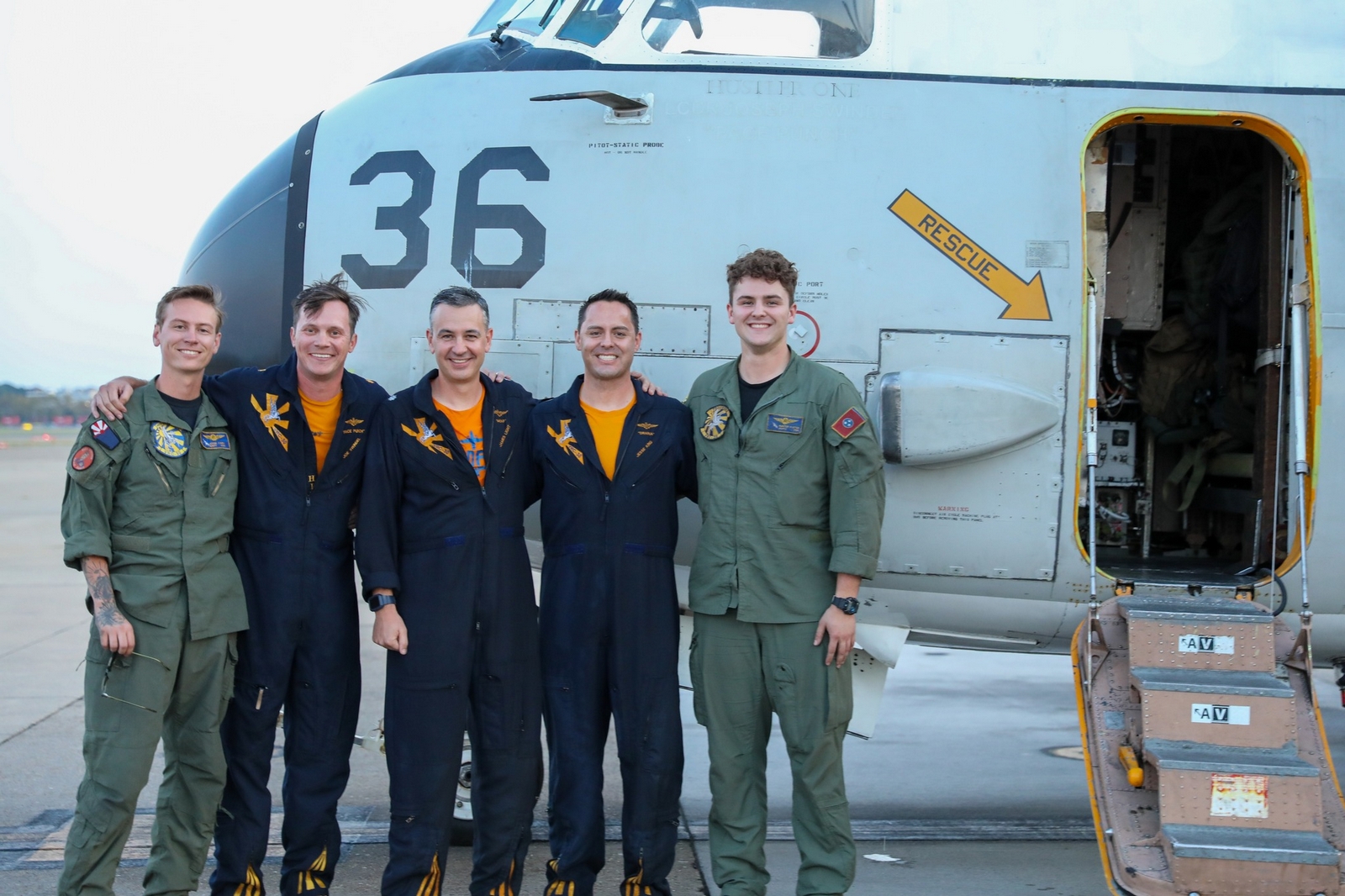
This transition marks the end of an era. The venerable Greyhound will remain the last aircraft to provide non-aviators (military and civilian alike) with the opportunity to make an arrested landing on a carrier and also take a catapult shot from a carrier. While the CMV-22 provides new capability to operational commanders with its ability to take-off and land vertically, opening its operating envelop to other platforms than solely the carriers, the retirement of the C-2A marks the end of an era in Naval Aviation lasting since World War II. No longer will passengers feel that anxious tug of a wire, decelerating a 25-ton aircraft from approximately 130 mph to 0 in less than 400 feet, nor will they feel the exhilaration of the catapult shot where they hang in the straps of their seats and experience 0 to approximately 150 mph in less than two seconds. This will probably be the only task where its successor the CMV-22B Osprey cannot meet the performance of the C-2A Greyhound.
Patrick Roegies is born and raised in Tilburg, the Netherlands and currently resides in Sittard in the south of the Netherlands where he lives with his wife Joyce. Patrick graduated from a technical study at the HTS in Tilburg in 1997. He currently works as a head of an equipment engineering department in the south of the Netherlands.
His passion towards aviation started at the age of 7 in 1977 when his father took him to nearby Gilze Rijen Air Force base where he witnessed his first howling F-104 Starfighters which were practicing and as a result he got addicted immediately. The F-104’s were present in order to determine a tactic to create a diversion for the “train highjack” which was going on in the Netherlands at that time. The F-104’s were meant to create a diversion by performing an overshoot, kicking in the afterburner directly over the train, creating confusion with the hijackers and enabling the police to master the hijackers. This action has actually been performed and worked.
This is when his passion towards aviation was born. He got permission from his parents to visit the airbase every free hour he had and his father showed him the way by bicycle. Patrick got his first camera in 1984 which was a Canon T50 and shot Kodachrome 64 slides of mainly military aircraft. He changed his gear in the mid-nineties to Nikon and is a Nikon user ever since.
When Patrick obtained his driver license in 1989 he started to visit airbases all over Europe and from 1997 onwards he made worldwide visits to military airbases.
In order to further professionalize his work as an aviation photographer and journalist he started to write military aviation related articles based upon his visits to various nations and their Air Forces. He managed to publish his first article in 2003 and increased the numbers of publications every year.
Patrick can be reached at: [email protected]

